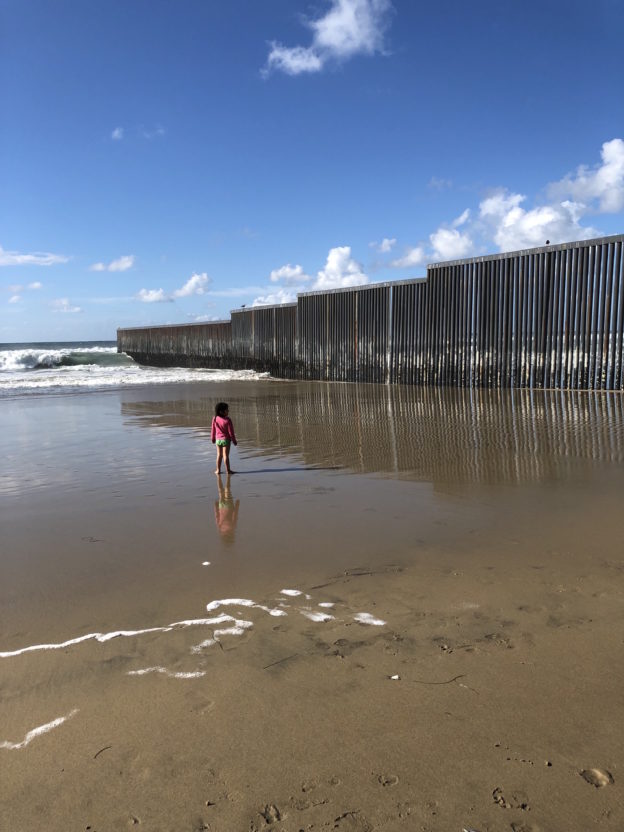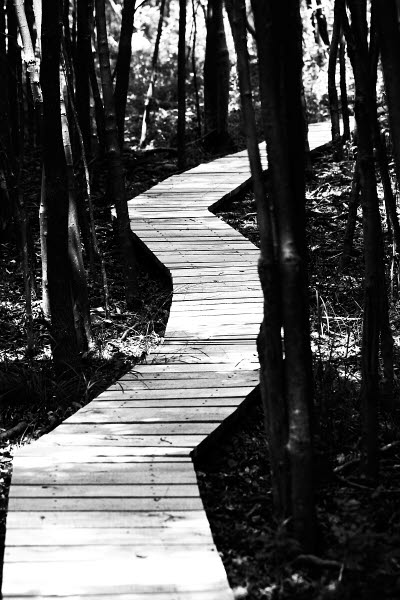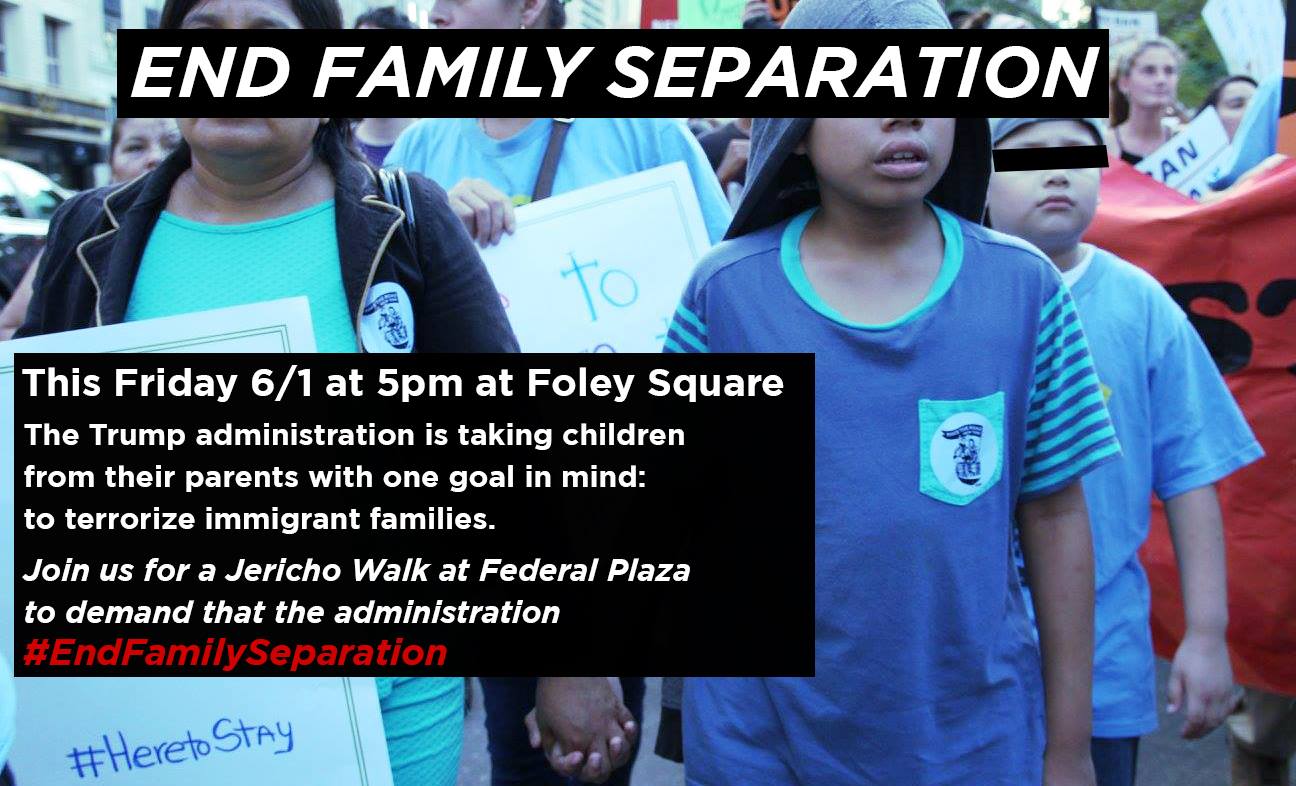Under the Shadow of the Wall

My daughter Djuna, her friend Hannah, and I recently spent a week at the U.S. southern border between San Diego and Tijuana as part of a large network of solidarity and support responding to the humanitarian crisisthere and organized by, among others, the New Sanctuary Coalition(NSC) and its Sanctuary Caravan, Al Otro Lado, and the San Diego Rapid Response Network. Here follow some impressions from that week.
Each morning at El Chaparral Plaza in Tijuana, some men set up a small red pop-up canopy tent, and other members of the Central American Exodus and other asylum seekers gather around. There is a table, a megaphone, and a battered notebook that contains numbers associated with the names of people who are on a list of those waiting for a chance to present themselves at the U.S. border to request asylum. Each number represents ten people. By law—both U.S. and international—people should be able to go to any port of entry to request asylum, but the current administration has enacted a “metering” systemwhere only a specified number of people is allowed to cross each port on any given day. Since there is a huge backlog of people waiting—at this point the wait can be up to two months—the asylum seekers have self-organized, and a family or a group of men who have been on the list for a while take charge of the notebook. In addition to calling out two batches of names—one in the early morning and one an hour or so later—they give out new numbers every day until noon. When it is their turn to cross, they pass the notebook along to people who are lower down on the list.
Each morning a member of Grupos Beta, a service of the Mexican National Institute of Migration, relays from U.S. Customs and Border Patrol (CBP) to the notebook keepers the total number of asylum seekers who will be allowed to cross that day. The total might be 80, or it might be none. It is important to understand that this entire system is illegal, and has arisen out of desperation. A member of the notebook team will use a megaphone to read out the names of people whose numbers have come up. People must keep track of their numbers and when they are likely to be called. Many of them are living in shelters and encampments far from Chaparral, and have to get themselves to the plaza or risk losing their chance to cross. There is an informal grace period of two days, so if your number is called and you miss it, if you can get there within two days, you might still go across. The mornings that I was at Chaparral I saw lots of young mothers with small kids, toddlers, and even infants. In addition to members of the Central American Exodus, many of them from Honduras, there were single men from Haiti and West Africa.
After the names are called—and they often have to call two hundred names to assemble a desired 20 people—people line up along one side of the plaza to wait for the shuttle vans driven by Grupos Beta. The vans take people to the other San Ysidro checkpoint where they cross the border to face the bureaucratic nightmare created by the CPB—detention in the Ice Box, separation of fathers from their wives and children, the “credible fear interview,” and so on. The San Diego detention facilities are over capacity, and before we arrived people were being released from detention in the middle of the night, just dropped off at a bus stationor in a public park. The San Diego Rapid Response Network organized shuttle buses to drive around after midnight looking for people who had been dumped, and taking them to shelters. Because of bad publicity, this practice of “dumping” has apparently been suspended.
The Sanctuary Caravan has two programs running concurrently. One is the Pro Se Clinic where volunteers fill out intake forms with people who are scheduled to cross the border and help them prep for their credible fear interviews, which is the first step in the asylum process. The Pro Se Clinic’s borrowed storefront has turned into a de facto community center where families hang out and volunteers play with the kids while their parents are interviewed. Volunteers also go to the El Barretal refugee camp, twenty minutes out of Tijuana, to let people know about available services and to do intake.
The Accompaniment Program in Tijuana is in some ways more extensive than its counterpart in New York City. In addition to waiting with friends at Chaparral until they board the Grupos Beta shuttles, Sanctuary Caravan also keeps track of friends’ numbers, and has a van that picks people up from El Barretal each morning to take them to the plaza where the names are called.
Because Djuna, Hannah, and I don’t speak Spanish, we had a hard time in the beginning figuring out how to plug into the work that was going on. We were cursing ourselves for having chosen French as our second language. Our first afternoon I was called to the clinic to translate for some Haitians, but when I got there it turned out they were Creole speakers and my French was still useless.
Djuna and Hannah ended up working with the World Central Kitchen, an organization of chefs addressing hunger and poverty, where they didn’t need Spanish to scrub pots and chop vegetables. I joined them a couple of afternoons and was wildly impressed by the work that was going on. In Tijuana, the World Central Kitchen prepares and delivers three thousand meals a day—feeding 1,500 people at lunch and dinner. The food is fresh, inventive, and made with love. One evening Djuna and Hannah went to deliver dinner to El Barretal, where they saw a thousand people living in tents. Hannah said, “They get meals, UNICEF is there, and Doctors Without Borders, but it’s still no way to live.” If it rains, they get wet. If it’s cold, they are cold. Djuna reported that women and children are fed first, and that everyone pitches in to help out with serving the meals.
Meanwhile, back at the volunteer hub, I was assigned to work as a “Story Steward,” which was a data entry and clerical gig supporting the Pro Se Clinic. One afternoon I spent a few hours prepping a large stack of intake files with all the needed forms and materials.
On Sunday afternoon, we went to Faro Playas de Tijuana, a beachfront recreation area, for a religious service that usually occurs on both sides of the hideous and immoralborder wall, which traverses the land, travels down across the sand, and continues into the ocean. Only the gulls could move freely from one side to the other. Of late, because of ‘security concerns,’ CBP has closed access to the International Friendship Parkthat connects both sides of the border and has created a no-go zone on the U.S. side of the fence, so the service occurred only on the Mexican side that day. Through the steel slats, razor wire, and cyclone fencing on the U.S. side, we saw at a distance CBP agents blocking access to the border, and beyond them we made out some of our Sanctuary Caravan colleagues, including NSC Executive Director Ravi Ragbir, who was visiting from NYC. On the Mexican side, there were cafes, restaurants and benches. Couples strolled, families picnicked, and children played in the surf under the shadow of the wall.
When we landed in New York City, Djuna and I discussed how it would take a while for us to process all that we had seen and experienced. We had been moved by the dignity and perseverance of the members of the Exodus. We had admired the dedication, humor, and intelligence of the Sanctuary Caravan’s volunteer coordinators. We had been disgusted by the violence, both physical and bureaucratic, of our government’s policies and agents.
Two days after we got back from the border, I picked up my work here in New York with NSC, and found out that my local Congressman, who had requested deferred action of removal for my Albanian friends (basically asking that they not be deported), had heard back from U.S. Customs and Immigration Services (USCIS). The request was denied, and USCIS told the parents that they have thirty-three days to leave the country that they have called home for fourteen years. Brooklyn is the only home their three young daughters, two of them U.S. citizens and one with DACA, have known. I sat in a cafe with my Albanian friend and the Congressman’s caseworker as we fought back tears and plotted our next moves. The struggle continues.
Nancy Kricorian
January 15, 2019









